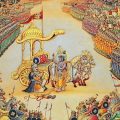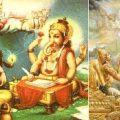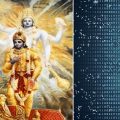Alchemy of Sounds: Observations on Sandhi in Context of Bhagavad Gita
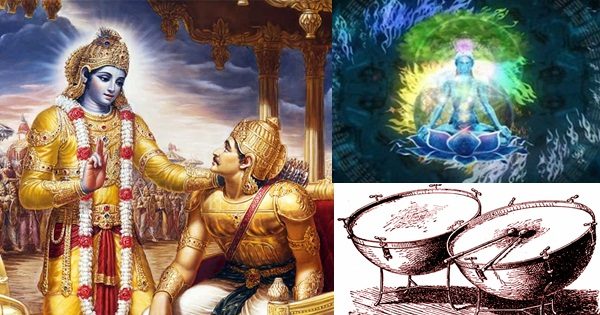
Why Sandhi?
While trying to get through the lengthy lofty words of the Bhagavad Gita, did you ever think why are the words so long? It would have been so much more easier if the words were split apart? It seemed to be spinning with so much of unfamiliarity embedded.
Well, in the world of chanting, the words of a line are delivered in rapid succession. There are no breaks between words. This causes a welding transformation in the joints. The primary cause of Sandhi is fluidity and ease in the mouth. The work of Sandhi is a natural vocal effect than strict rule of Grammar.
Hop along and discover some of the Sandhi elements in the Bhagavad Gita.

Effects and Filters with Sandhi
Think of Sanskrit sounds as Elements of Periodic table and Sandhi like an alchemy at the joint. Element A welds with element B. Depending on the family and type of each element, there is a compromise and adjustment needed.
There are 4 possibilities:

1. Like the war footings a replacement of a ruling sound with another sound (*)
2. An additional sound friend joins in on top of the exisitng sounds (+)
3. Drop of a sound A or B (-)
4. No new effect (.)
Let us see these effects further on.

And there are are 3 possibilities in Sandhi:
1. Between Vowels
2. Involving Consonants
3. Involving Visarga.
Sandhi of Vowels
We are all familiar with this vowel list:
अ आ इ ई उ ऊ – ऋ ॠ ऌ ॡ – ए ऐ ओ औ – अं अः
Let us organize this into sets, starting from simple vowels to more complex and long ones. This will really make the understanding quite simple.
1. Basic short vowels[अ इ उ ]
2. Some more short vowels [ऋ ऌ ]
3. Derived vowels [ए ओ ] aka guna
4. Next level Derived vowels [ऐ औ ] aka vruddhi
5. Semi vowels [य व र ल]
6. Long Vowels [ आ ई ऊ ॠ ॡ )].
Hope you have some appreciation for this arrangement. Well, this turns out to be Panini’s arrangement of vowels in a basic form. If you did not understand this arrangement, no worries, we will discuss it.
1) Alchemy with similar Sounds – Savarna Dheergha Sandhi
Let us start with the easiest swara sandhi. This involves sandhi of 2 vowels sounds belonging to the same family (sa-varna). This results in a longer form of that vowel (dheergha) as shown in set 6[ आ ई ऊ ॠ ॡ )].
आ = अ + अ or आ + अ or अ + आ or आ + आ
Same with ई ऊ ॠकृपयाविष्टम् = कृपया + आविष्टम्
अश्रुपूर्णाकुलेक्षणम् = अश्रु-पूर्ण + आकुल-ईक्षणम्
ममापनुद्याद् = मम + अपनुद्यात्
Having seen alchemy with same family, Let us watch alchemy of ‘अ’ with other vowels.
“akṣharāṇām a-kāro ’smi — Gita10.33
Among the letters, I am the first letter a”.
2) Alchemy resulting Guna Sandhi
[ए ओ ]
ए = अ + इ
ओ = अ + उआकुलेक्षणम् = आकुल-ईक्षणम्
त्यक्त्वोत्तिष्ठ = त्यक्त्वा + उत्तिष्ठ
दोषोपहत = दोष + उपहत
3) Alchemy resulting Vruddhi Sandhi
[ऐ औ ]
ऐ = अ + ए
औ = अ + ओइहैव = इह + एव
चैतत् = च + एतत्
चैव = च + एव
4) Alchemy resulting Semi Vowels aka Yana Sandhi
[य व र ल]
Interestingly, this is the alchemy between basic vowels and अ and results in semi vowels.
य = इ + अ
व = उ + अव्यथयन्त्येते = व्यथयन्ति + एते
क्लेदयन्त्यापो = क्लेदयन्ति + आपःत्वेवाहं = तु + एव + अहम्
भूमावसपत्नमृद्धं = भूमौ असपत्नम्
त्वय्युपपद्यते = त्वयि + उपपद्यते
पूजार्हावरिसूदन = पूजा-अर्हौ + अरि-सूदनर = ऋ + अ
ल = ऌ + अ
5) Alchemy of Guna vowels with अ Purva Roopa
Previously, we have seen alchemy of basic vowels with ‘अ’. Now we shall see alchemy of next set of vowels [ए ओ ] with अ. Interestingly, the guna vowel is retained as it is but the अ is dropped. Hence it is called Poorva Rupa.
In Bhagavad Gita, there are a lot of opposite words beginning with अ. This Sandhi can be used as a clue to figure out its presence. The ऽ symbol conveniently denotes this sandhi.
ए + अ = ए
ओ + अ = ओतेऽवस्थिताः = ते + अवस्थिताः
शिष्यस्तेऽहं = शिष्यस्ते + अहम्अनाशिनोऽप्रमेयस्य = अनाशिनो + अप्रमेयस्य
अपायिनोऽनित्याः = अपायिनः + अनित्याः
देहिनोऽस्मिन्= देहिनो + अस्मिन्
सोऽमृतत्वाय = सो + अमृतत्वाय
शाश्वतोऽयं = शाश्वतो + अयंअच्छेद्योऽयमदाह्योऽयमक्लेद्योऽशोष्य = अच्छेद्यो + अयम् अदाह्यो + अयम् अक्लेद्यो + अशोष्यः
6) Remaining Combinations – Yantha Vantha Sandhi
Like in the name Yantha Vantha, A Ya or Va sound is introduced in this Sandhi. And the vowel of the second word beginning is retained. Sounds confusing? Let us see a few examples:
[ए ऐ ओ औ] + swara = ay | aay | av | aav + swara
Alchemy with म् and न्
Let us start with the simple Padaccheda involving the popular म् ending and Vowel beginning. There are absolutely no additional effects but the presence of म् gives hint about breakage.
Krishna rebukes Arjuna with a string of provoking attributes.. This act of yours so not noble and unworthy:
अनार्यजुष्टमस्वर्ग्यमकीर्तिकरमर्जुन
म् + अ = मअनार्य-जुष्टम् अस्वर्ग्यम् अकीर्तिकरम् अर्जुन
Sandhi Involving Consonants
Consonant Sandhis is something to ponder about. They are like embellishments and adornments in a chain of the otherwise familiar words. We will look into it with a poetic and appreciation sort of outlook and not with the usual rigour.

Let us just observe these very familiar words. The patterns keep repeating and the best way of learning is to latch on to these phrases and the effects like musical gamakas. The effects range from softening, doubling and sliding up.
om tatsaditi śrīmadbhagavadgītāsūpaniṣatsu
jagannatha
sharacchandra ujjwala
yacchokham yacchreyah
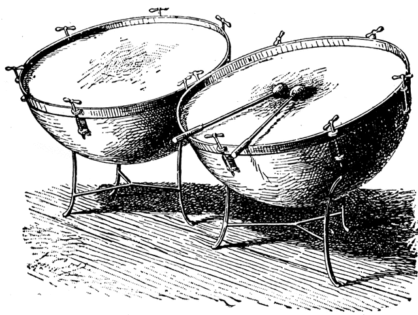
Image source: https://etc.usf.edu/
In Chapter 1 of Bhagavad Gita, there is a wonderful description of the loud resounding trumpets and conches announcing the war protocol, the ghoshna announcement.
sa ghoṣo dhārtarāṣṭrāṇāṁ hṛdayāni vyadārayat –
That uproar tore the hearts of the sons of Dhritharashtra.
Let us check out in the lab of our mouths.. What is the difference between क, ख vs ग, घ? The former set seems focussed, sharp and the later seems more deep and announced. The unvoiced aghoshit and the voiced ghoshit. The voiced sounds seem to be a bit spread out due to the additional tuft of voiced air.
Let us check out the architecture and design of the consonant sounds. It is pretty much like periodic table. The various vargas or rows indicate the placement in the mouth. The thermal sounds श ष स ह and semivowel sounds य र ल व can also be seen as part of the vargas. Test it out in the laboratory of your mouth.
In the vertical arrangement, they are divided into 2 sets of unvoiced, 2 sets of voiced and one set of nasal sounds. Take some time understanding this picture.
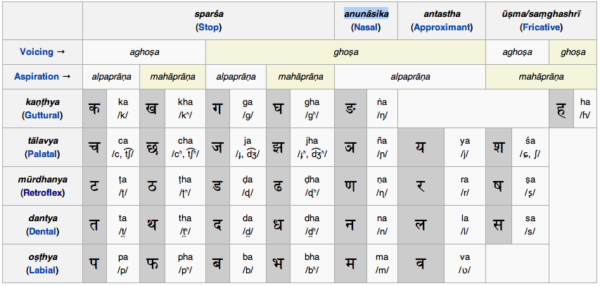
Let us change the pitch of the Consonant Sandhi. Every sound has a kula gotra of its position and voice. When sound A approaches sound B, depending on the differences in varga and voice, the sounds A & B have to make adjustments for a smooth union. This is by far the most important paradigm of Consonant Sandhi.
Dr Sampadananda Mishra quotes beautifully on this topic:
“I always say to my students that there is a great lesson for living a harmonious and joyful life from the rules of sandhi. A hard unvoiced can never interact with a soft voiced. There will be choppy interruption and feeling of uneasy.
What’s the way out? Compromise, sacrifice; When one compromises to be one with the other, there is a happy blending and rhythmic flow. That’s the secret of a joyful life. It turns the ordinary life into a life of music and melody.”
With the above understanding, let us explore a few unions:
1. unvoiced meets unvoiced
2. unvoiced meets voiced
3. voiced meets unvoiced
4. union with nasal sound
5. union with thermal sound.
The famous musician Johann Wolfgang von Goethe quotes:
“Music is liquid architecture; Architecture is frozen music.”
After seeing the architecture of Sandhi, it makes me feel
“Sandhi is liquid Architecture of Sounds”
C.1.1 Unvoiced meets Unvoiced: No effects
Let us start with the small words यत् and तत्. Bhagavad Gita is full of small connector words and understanding the alchemy with one of them gives great confidence over the underlying transformation.
The sound त् is a clear unvoiced sound involving dental touch. When it unites with some of the other unvoiced notes, it is an easy union. There is no compromise needed and hence no additional effect.
त् + [unvoiced क, त, प, स] => No effect
यत् करोषि => यत्करोषितत् ते => तत्ते
यत् तपस्यसि => यत्तपस्यसियत्पुण्यफलम् => यत् पुण्य-फलम्यत् साङ्ख्यैः => यत्साङ्ख्यैः
तत् सर्वम् => तत्सर्वम्
** In the alchemy of 2 unvoiced sounds, generally there is no effect..
C.1.2 Unvoiced meets Unvoiced: Effects
We saw that the union of त् + [unvoiced क, त, प, स] had no compromise as they were distantly placed. However, the च varga is very close to the त varga and compromise is needed. From dental position, tongue has to be rolled back to the palatal taalavya position.. To help this, the starting sound morphs to the palatal sound. A beautiful doubling pattern is produced..
त् + [च varga]
Post effect
यत् च => यच्च
यत् चन्द्रमसि => यच्चन्द्रमसि
यत् ज्ञात्वा => यज्ज्ञात्वा
यत् जुहोषि => यज्जुहोषि
C.2 When Unvoiced meets Voiced
Observe this phrase ॐ तत्सदिति श्रीमद्भगवद्गीता
Every chapter ending has this verse. What can we infer from the ‘द’ sounds? Inorder to meet the Voiced sounds, Unvoiced त has been upgraded to Voiced द of it’s family.. A small compromise is made for the smooth transition.
Transformation to Voiced (त् -> द)यत् गत्वा => यद्गत्वा
यत् दानम् => यद्दानम
तत् धाम => तद्धाम
तत् भासयते => तद्भासयते
Similarly, when it interacts with a vowel or semi vowel which are voiced, the unvoiced sound is upgraded to its voiced counterpart in its varga
त् + [Vowel/Semi Vowel]
Transformation to Voiced (त् -> द)यत् अक्षरम् => यदक्षरं
यत् अश्नासि => यदश्नासियत् इच्छन्तः => यदिच्छन्तः
यत् ऋच्छया => यदृच्छयातत् योगैः => तद्योगैः
यत् यतयः => यद्यतयो
** When Unvoiced meets Voiced consonant or vowel, it is ugraded to its Voiced form.
C.3 When Voiced meets Unvoiced
C.4 Thermal alchemy
A very interesting chemistry between त् &श. While त् is a simple dental unvoiced sound, The thermal sound श is a palatal shearing thermal sound with more contact than च. . Hence we get intermediate च्छwhile combining त् + श. Try it out.
[त् + श => च्छ]यत् शोकम् => यच्छोकम्
यत् श्रेयः => यच्छ्रेयः
तत् शृणु => तच्छृणु
C.5 Nasal Sound Alchemy
There are 2 kinds here. a)Nasal + Consonant b) Consonant + Nasal. Let us look at the nasal set ञ म ङ ण न
a)Nasal + Consonant
A frequent combination is sandhi of न् with the connector च
अशोच्यानन्वशोचस्त्वं प्रज्ञावादांश्च भाषसे ।
गतासूनगतासूंश्च नानुशोचन्ति पण्डिताः ॥न् + च = श्चप्रज्ञावादांश्च = प्रज्ञा-वादान् + च
अगतासूंश्च = अगतासून् + च
b) Consonant + Nasal
Let us take a few examples outside Bhagavad Gita to register these patterns. When there are 2 nasal sounds clustered, there is a hint about this combination:
jagannath = jagat + nath
jaganmohan = jagat +mohan
shanmukh = shat + mukhत् + Nasal => Nasal Replacement
यत् माम् => यन्मां
Sandhi Involving Visarga
In chapter 8 of the Bhagavad Gita, Krishna defines Karma as the creative force Visarga that creates the material states.
In the world of Words, may be we can imagine each word is a bubble that is blown off with a visarga expulsion. And when there is a context suffix or a Sandhi, the visarga is dropped and there is a seamless blending.
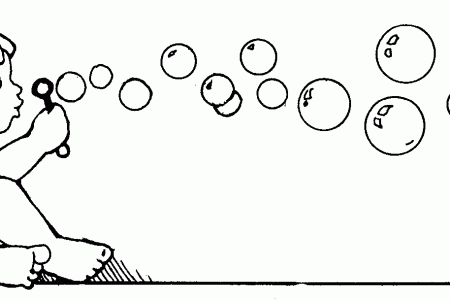
Source: Medium
Let us observe some familiar phrases.
bhavānbhīṣmaśca karṇaśca kṛpaśca samitiṁjayaḥ
भवान् भीष्मः च, कर्णः च, समितिञ्जयःsenayorubhayormadhye सेनयोः उभयोः मध्ये
tataḥ śvetairhayairyukte ततः श्वेतैः हयैः युक्ते
During Sandhi with Visarga, the ह expulsion should gradually merge with the following sound. Let us remind ourselves about the other thermal sounds श ष स that is close to ह . Therefore union of visarga with a unvoiced च छ, ट ठ and त थ results in श ष स respectively.
Sa effect or Sa tatva
स
मनसस्तु = मनसः + तु
यस्तु = यः + तु
संतुष्टस्तस्य = सन्तुष्टः + तस्य
श्रेष्ठस्तत् = श्रेष्ठः + तत्
श
असक्तश्चिकीर्षु = असक्तः + चिकीर्षुः
Ra effect or Ra tatva
Union with vowels involves rapid expulsion followed by retraction for vowel. Hence it produces the semivowel र.
उभयोरपि = उभयोः + अपिअघायुरिन्द्रिय = अघायुः + इन्द्रिय
आत्मरतिरेव = आत्म-रतिः + एव
आहुरिन्द्रियेभ्यः = आहुः इन्द्रियेभ्बुद्धिरस्य = बुद्धिः + अस्य
बुद्धिर्यो = बुद्धिः + यःसेनयोरुभयोर्मध्ये = सेनयोः + उभयोः + मध्ये
Drop of Visarga or Lopa
सञ्जयः +उवाच => सञ्जय उवाच
अर्जुनः उवाच => अर्जुन उवाच
O effect or O tva
श्रेयो भोक्तुं = श्रेयः + भोक्तुम् सोऽमृतत्वाय = सः +अमृतत्वाय
लोकोऽयं = लोकः + अयम्
द्वितीयोऽध्यायः
Brilliance of Panini & Maheshwara Sutra
Well, with just a few illustrations, it might be seeming too much alchemy syntax. Was there a way to visualise the effects of Sandhi? Was there a neat presentation? Is there a better architecture to represent the elements?
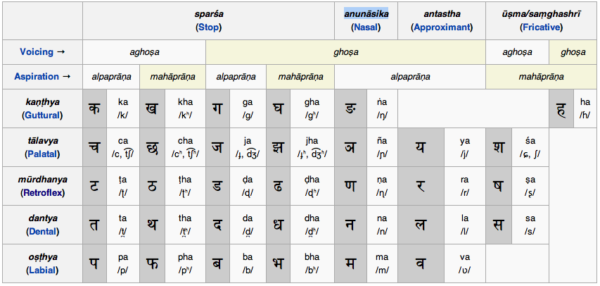
It feels like Maharshi Panini has taken the standard vowel and consonant table and reorganised it into sets to visualise the output of the alchemy. There may be a million other reasons for the reorganisation, but with my current understanding, it is very evident in the sandhi syntax. Ignore the Blue markers as they act as delimiters or markers for the sets.
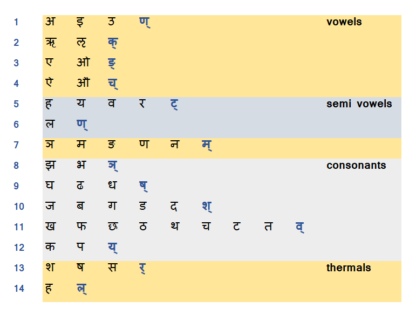
Panini distribution of alphabets
In the Vowel Sandhis, we looked into organic groups based on vowel complexity. These correspond to the first few sets in Panini’s distribution.
In the Consonant Sandhi, we looked into the unvoiced + unvoiced (cha varga), unvoiced + voiced, voiced + unvoiced, thermal and nasal alchemy. I am amazed how beautifully they fit in here.
How to go about breaking Sandhis?
After going through the sandhi for few chapters, one gets familiarity with the small connector words, vocabulary and intuition into the sandhi operations. From then try doing the sandhi yourself. It will help.
The ra and sa sound hints visarga, the double consonant hints t ending, presence of ya ra la hints swara sandhi. Check for second vibhakthi m endings. As the union with Bhagavad Gita happens, keep breaking the word bondages and make friends with them.
REFERENCES
This article was first published at medium.com.
Featured image courtesy: Medium, HariBhakt and Google.
Sujatha Ratnala
Latest posts by Sujatha Ratnala (see all)
- Alchemy of Sounds: Observations on Sandhi in Context of Bhagavad Gita - October 23, 2024
- Data Science with Bhagawat Gita: For Building Intuition in Understanding - October 23, 2024

